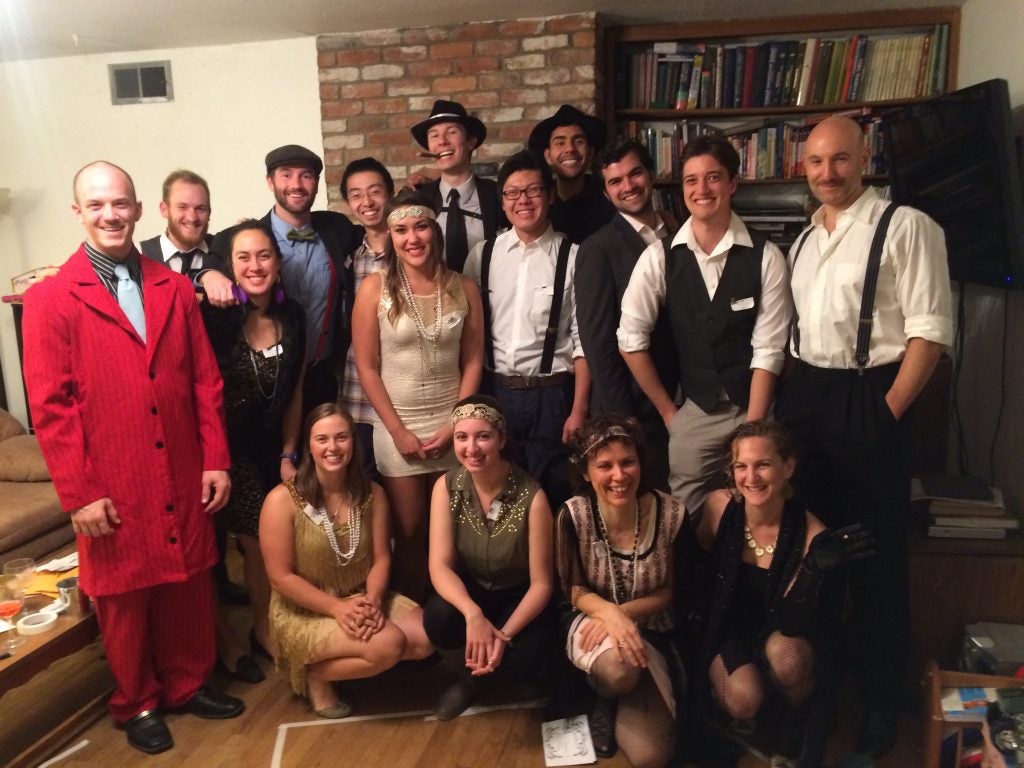Giovanni Hanna from the Integrative Genetics and Genomics graduate group has joined the lab. His work will focus on the development and evolution of male (and perhaps also female) reproductive organs.
Author: akopp Page 2 of 15
David receives an NSF Doctoral Dissertation Improvement Grant for his work on the evolution of novel sensory systems. His project will focus on how the new organs acquire their unique repertoire of effector genes.
 November 6 – Zach organized a great murder mystery party, set in the Prohibition era. The lab turned out to be full of gangsters, bootleggers, and other disreputable characters. Hardly a surprise.
November 6 – Zach organized a great murder mystery party, set in the Prohibition era. The lab turned out to be full of gangsters, bootleggers, and other disreputable characters. Hardly a surprise.
Hey guys – the Murder Mystery Party will take place November 6 at the lab headquarters. Thanks to Zach for organizing it! Do your best to make him proud.
Yige Luo, a recent graduate of Peking University, joins our lab and the PBG Graduate Group in September 2015. Yige has done some great work on the pheromones of a very unusual fly species.
More about Ammon’s work on the evolution of electrical organs in fish here: https://ammonthompson.wordpress.com/cv/
Ammon is joining our lab as a postdoc in September 2015.
Zach Farrow, a BMCDB graduate student, joins the lab. Zach’s previous background is in visual system development in mice.
The Kopp lab is rapidly expanding! Not only has this fall seen the arrival of postdoc Ammon Thompson and grad student Yige Luo, but we also have two rotating graduate students from the genetics graduate group — Giovanni Hanna and Logan Blair. To celebrate these new arrivals and the start of fall, the lab escaped for a day hike to the Desolation Wilderness on Saturday. We hiked from Wright’s Lake up to Twin Lakes. (Well, almost all of us hiked but someone had a free backpack ride — see photo below!) The water was freezing, but almost everyone took a plunge!

Happy Belated Valentine’s Day from the Kopp Lab!
Lab alumnus Daniel Friedman offers this V-Day pun for all you lovers of biochemistry:
Q: Why did the hydrophobic amino acid worship the Fork God?
A: Because it was Valine-tine’s Dei.
And lab manager Olga offered up this delicious cake for the ever-hungry members of the lab.





